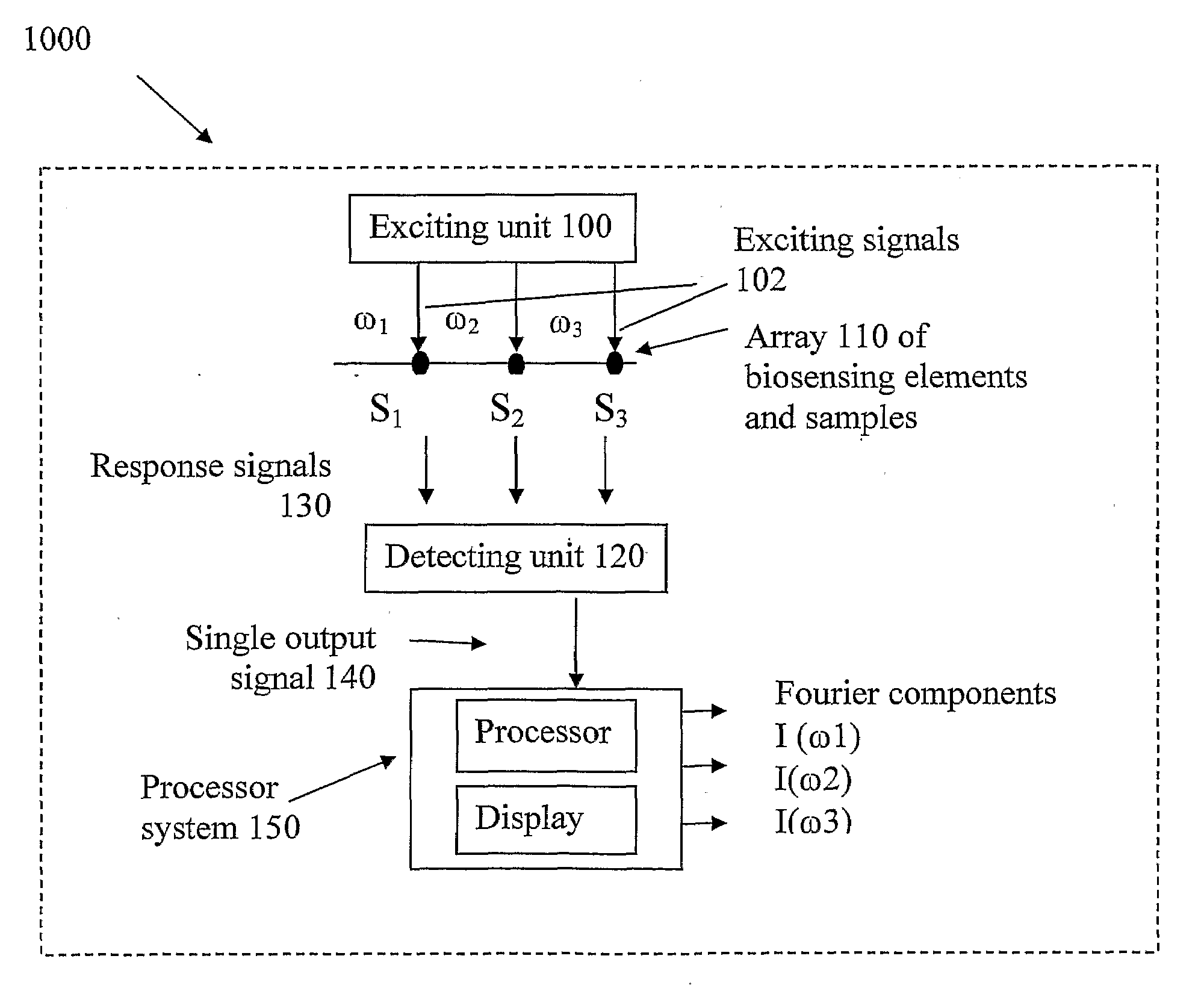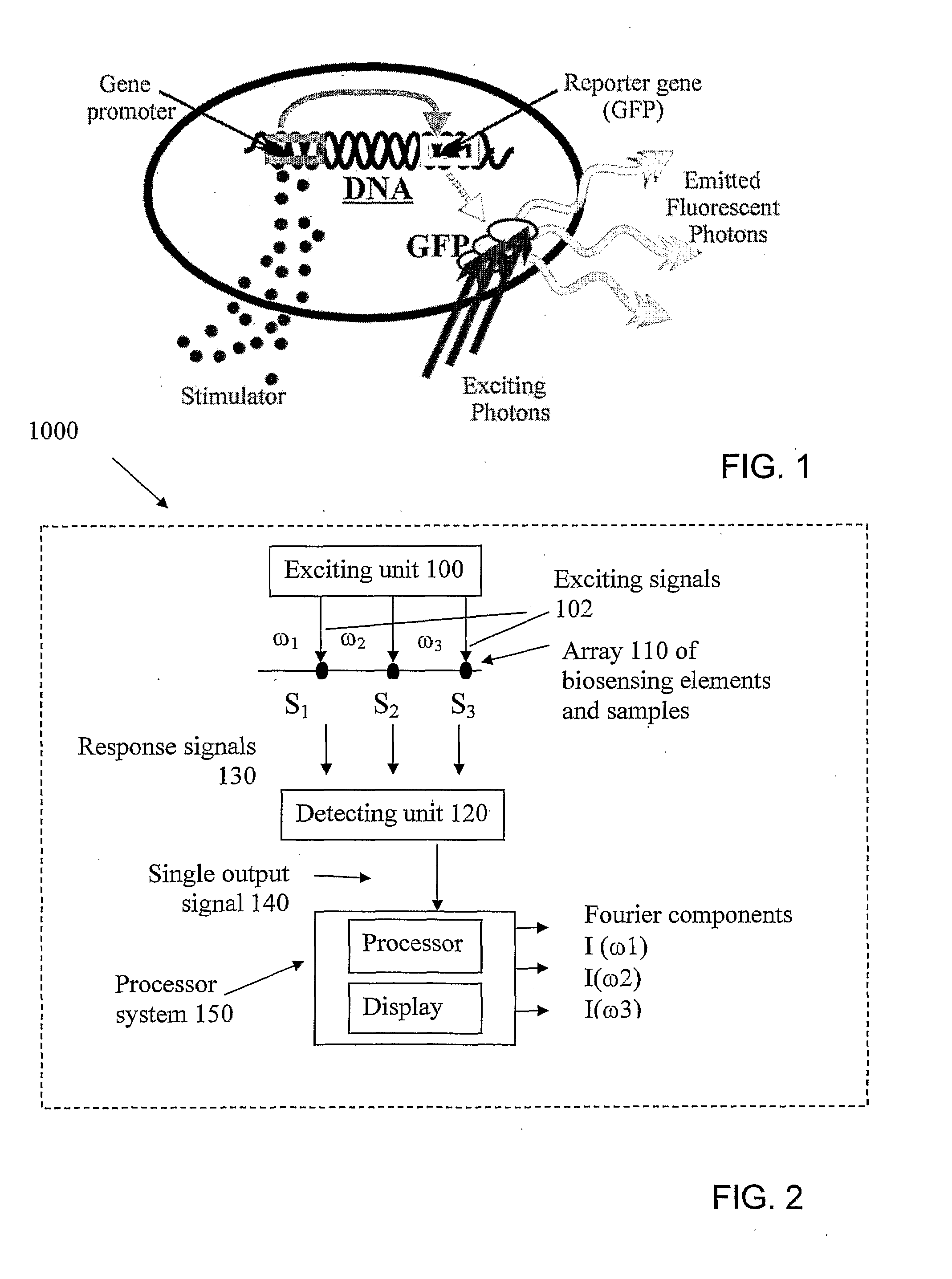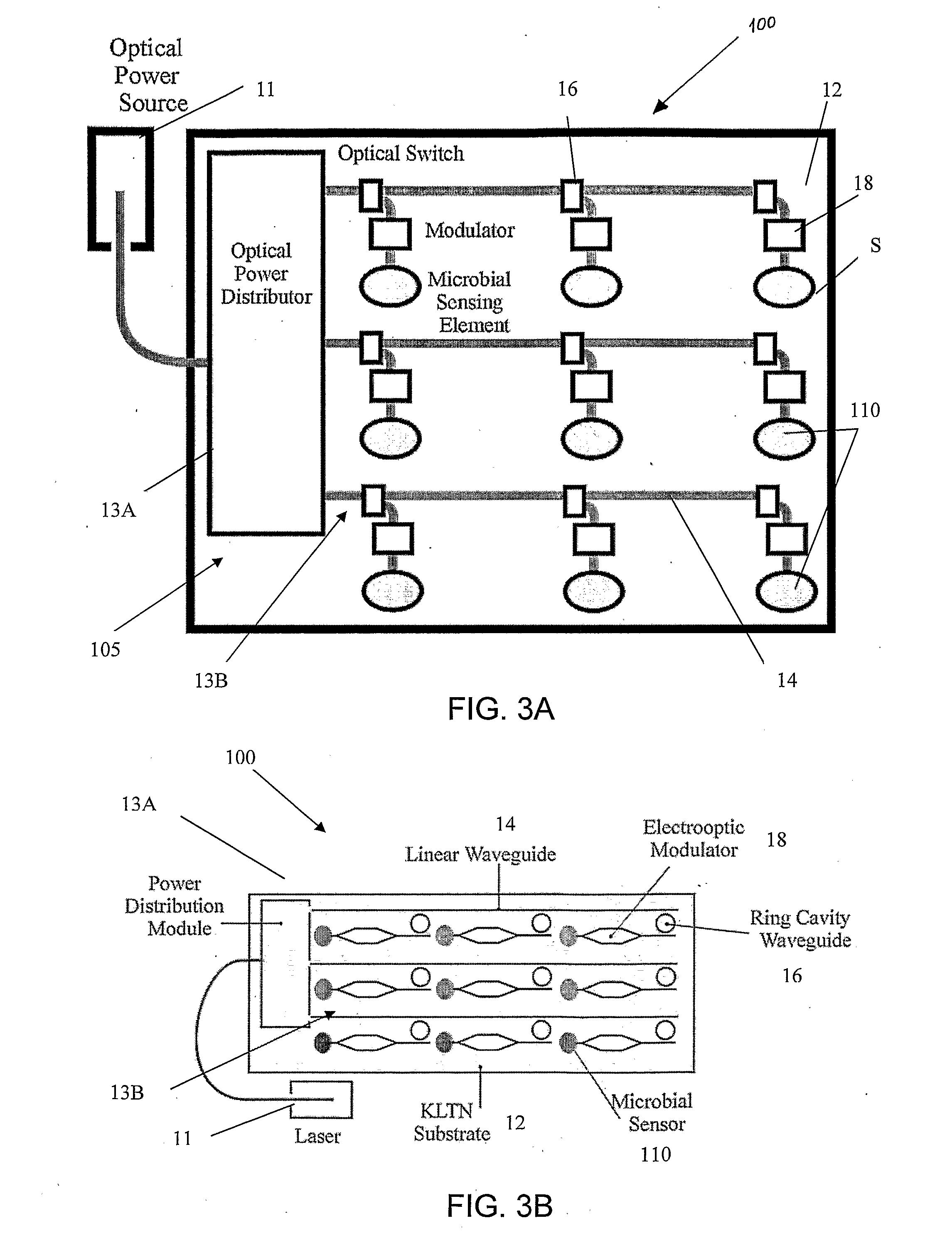Concurrent monitoring of a plurality of samples by an array of biosensing elements
a biosensing element and array technology, applied in the field of sensing techniques, can solve the problems of complex series of reactions that can only exist in an intact, functioning cell, molecular recognition or chemical analysis can rarely provide this type of information, and achieve the effect of improving the detectivity of the respons
- Summary
- Abstract
- Description
- Claims
- Application Information
AI Technical Summary
Benefits of technology
Problems solved by technology
Method used
Image
Examples
Embodiment Construction
[0074]FIG. 1 illustrates general principles of identifying a sample by its interaction with a microbial biosensing element, that might result in the production of a fluorescent molecule signifying the presence of the target element. Applying exciting light to the biosensor allows for detecting the fluorescence if any, and thus identifying the sample and / or the target agent.
[0075]The present invention takes advantages of the above technique, and provides a novel method and system enabling concurrent monitoring of multiple samples while interacting with multiple biosensing elements.
[0076]More specifically, the present invention utilizes optical monitoring technique applied to biosensing elements of the kind responding by fluorescence, when a fluorescent molecule is created as a result of the biosensing element interaction with a sample, and is therefore described below with respect to this specific application. It should however be noted that the invention is not limited to this speci...
PUM
| Property | Measurement | Unit |
|---|---|---|
| Phase | aaaaa | aaaaa |
| Frequency | aaaaa | aaaaa |
| Wavelength | aaaaa | aaaaa |
Abstract
Description
Claims
Application Information
 Login to View More
Login to View More - R&D
- Intellectual Property
- Life Sciences
- Materials
- Tech Scout
- Unparalleled Data Quality
- Higher Quality Content
- 60% Fewer Hallucinations
Browse by: Latest US Patents, China's latest patents, Technical Efficacy Thesaurus, Application Domain, Technology Topic, Popular Technical Reports.
© 2025 PatSnap. All rights reserved.Legal|Privacy policy|Modern Slavery Act Transparency Statement|Sitemap|About US| Contact US: help@patsnap.com



